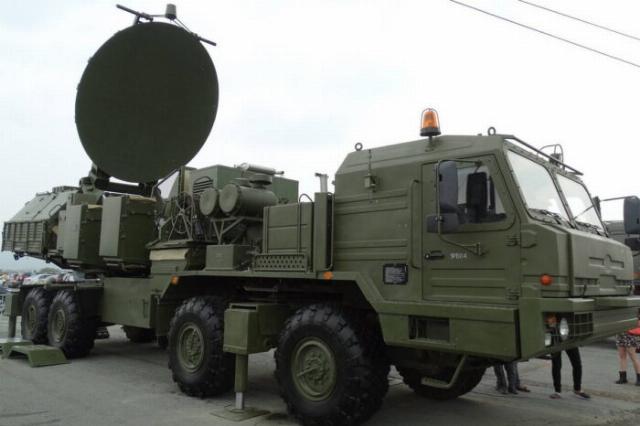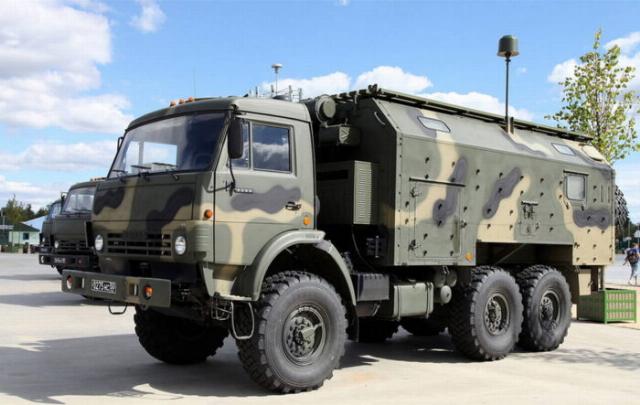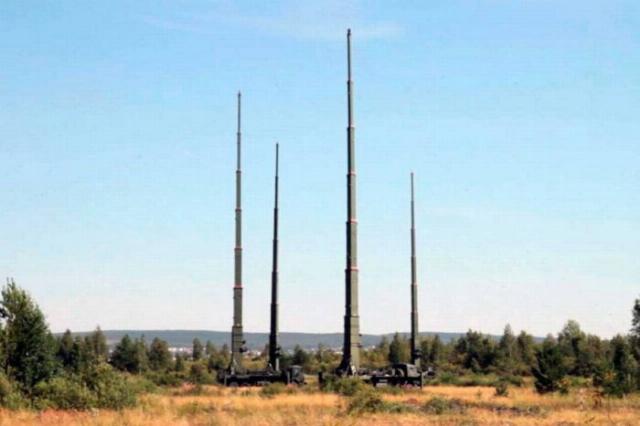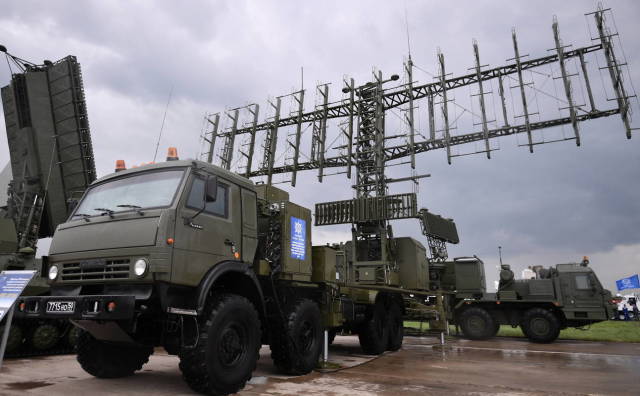There is no doubt that electronic warfare plays an important strategic role for the Russian Armed Forces. In this regard, we offer an article from the electronic journal Global defense technology, which examines Russia's electronic warfare and its ability to support the country's defense capability.

Samuel Cranny-Evans
The author is Samuel Cranny–Evans (Samuel Cranny-Evans) - in addition to publications in Global defense technology, participates in Janes news and analytical publications. His research included the development and modernization of the People's Liberation Army of China, artillery tactics in Ukraine, and Russian management concepts.
S. Cranny-Evans holds a degree in military studies from the University of Kent, from which he graduated with honors in 2012, having written a dissertation on the morale of the Russian population during World War II. His research has included conflicts throughout history from the Punic Wars to the Falklands.
Electronic warfare (EW) occupies a special place in the concept of operations of the Russian Ground Forces. Electronic warfare is considered as a means by which the Russian Armed Forces can degrade the enemy's combat systems to such an extent that any technological superiority will be seriously compromised.
EW Russia is located on two main levels. The motorized rifle brigade is equipped with a company of electronic warfare troops with a wide range of capabilities for conducting tactical warfare. The army group also includes an electronic warfare battalion with equipment and facilities specifically designed for operational systems. In addition, there are five electronic warfare brigades, one for each of the four military districts of Russia, and two brigades in the Western Military District.
One of the problems that is often mentioned in Russian military news releases is a massive rocket and space attack, a phrase that they [the Russians] shorten to MRAU. In fact, the MRAU is a combined use of air, space, land and sea assets for long-range aviation and missile strikes against the most important nodes of Russia's maneuverable formations, as well as critical infrastructure facilities.
Russian scientists have observed the use of these weapons and concepts in many conflicts and are quite confident that the MRAU will open any conflict with NATO. To prevent this, the Russian Armed Forces have developed and deployed a huge range of ground-based air defense systems, such as the S-400 Triumph and S-350 Vityaz anti-aircraft missile systems. They can be used to defeat cruise and ballistic missiles and other aerial targets.
The air defense is multilevel and designed to work together with the efforts of the Russian Aerospace Forces to deplete and degrade NATO's MRAW.
The Russian Electronic Warfare Brigade
Russia's air defense is well studied. However, one element that is often overlooked when describing this picture is the electronic warfare brigade and its equipment. The electronic warfare brigade is designed to provide large-scale protection of critical nodes of the Russian connection. It can be organized by tasks to support specific operations, or its effects can be combined to achieve effects against complex targets.
The brigade is equipped with 1RL257 Krasukha-4, as well as 1L260 Krasukha-2, two 8x8 machines with electronic warfare payloads. Their equipment is designed to suppress the operational systems of Joint Surveillance and Target Designation (JSTAR) aircraft, such as the Northrop Grumman E-8, and long-range radar detection (AWACS) aircraft, such as the Boeing E-3 Sentry, respectively.

Krasukha-2 electronic jamming station
Krasukha-2 is used to suppress on-board S-band radars (from 2.3 GHz to 2.5 GHz / from 2.7 GHz to 3.7 GHz), and Krasukha-4 is effective against on-board X and Ku-band radars (from 8.5 GHz to 10.68 GHz and from 13.4 GHz to 14 GHz / from 15.7 GHz to 17.7 GHz, respectively). TASS clarifies that Krasukha-4 is designed specifically to protect command posts, troops, ground-based air defense systems and industrial facilities from radar reconnaissance and precision weapons. It uses broadband active interference.
These types of aircraft are important assets of the NATO Air Force. The first provides ground surveillance and command and control in the theater of operations. The latter is an on-board warning and control center. Together, they provide and coordinate the NATO Air Force and are considered by the Russian command as the most important nodes for conducting MRAW.
Machines of the Krasukha-4 electronic warfare station 1RL257
Alternatively, Krasukha-4 can be combined with the TK-25 ship complex, designed to detect and suppress radar signals from air and ship guidance systems, as well as anti-ship missiles. It was used in Syria, with the first providing target detection and the second providing radar suppression.
Russian electronic warfare systems on UAVs
The RB-341B Leer-3 system, which is also usually attached to the electronic warfare brigade, attracted considerable attention. The Leer-3 is based on a 6×6 truck and uses the Orlan-10 UAV, which can carry an electronic warfare payload, increasing the range. It is reported that the UAV has a built-in mobile communications tower simulator designed to interact and suppress GSM-900 and GSM-1800 mobile communication networks.

Automated electronic warfare system "Leer-3"
The system is capable of covering an area of 6 km with the ability to capture up to 2,000 mobile phone connections simultaneously or three separate operators. According to some Ukrainian news agencies, it gained notoriety in Ukraine, where it was used for various purposes, including tracking mobile phone users, sending fake text messages to network subscribers and correcting artillery fire.
The Murmansk-BN system provides jamming and interception of high-frequency messages on TVD. Murmansk is a reconnaissance and radio interference system consisting of several vehicles and large antenna masts. It is used to provide large-scale reconnaissance and interference with airborne HF signals, which are necessary for communication over long distances between NATO air support assets.

The deployed Murmansk-BN electronic warfare system
It is credited with a range of 1,000 km, although some Russian sources claim that 2,000 km can be achieved in ideal atmospheric conditions. The Pravda article attributes to the system the ability to search for RF radiation over a large area, as well as the ability to jam communications between aircraft, ships and satellites.
Limiting NATO's capabilities
If we compare the capabilities of these four systems, it seems that they are designed to target and interfere with the actions of key NATO aviation support assets, as well as the systems that will be involved in conducting the MRAW.
Combined with the kinetic effects of Russia's echeloned ground-based air defense and air defense systems, the goal will be to damage NATO aircraft, reduce the intensity of its sorties, and reflect and reduce the effect of its massive missile strikes.
Other electronic warfare systems, such as Polye-21 or R-330N Inhabitant, which can be used to jam or suppress GPS signals, can also play a role in this. This will have two effects; reducing the accuracy of GPS-guided weapons and not allowing forward guidance cells to know where they are.
Russia's overall goal is to create a multi—layered system of effects, each of which performs a specific function on the battlefield, which is expected to weaken one of NATO's strengths. Russian sources point out that this should preserve Moscow's own forces, allowing them to achieve the results of their mission in accordance with the broader context of the conflict.
Based on the materials of the resource defence.nridigital.com
The materials of the article contain exclusively the author's estimates and do not reflect the position of the editorial board of IVi

